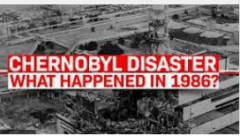Contents
All humanity has some common pains. Today, we will touch on a topic that is a bit heavy, a bit sad but full of lessons from these common pains: “Chernobyl Disaster”. Maybe you heard its name from the popular TV series in recent years, or maybe you remember it as a paragraph from your school textbooks. But Chernobyl is not just an accident or a name; it is the biggest nuclear disaster in human history, a deep wound that changed the lives of tens of thousands of people in one night, and whose effects continue to this day.
In this article, we will try to understand what happened on that cold April night, the reasons behind this terrible disaster, and most importantly, the painful legacy this event left us, without getting bogged down in technical terms, in its most humane aspects.
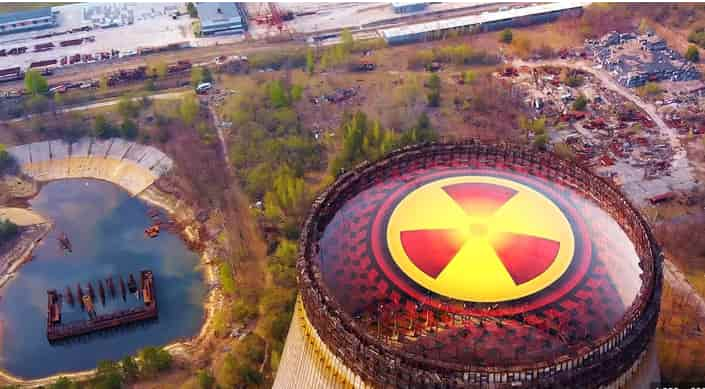
As humanity, we should not forget that this disaster is also a painful reminder of the lessons humanity needs to learn about the environment, technology and transparency. This disaster, whose effects still continue today, has been a turning point in nuclear energy discussions and has caused energy policies and security protocols to be reshaped. In this article, we will examine the causes, consequences and traces left behind by Chernobyl disaster more closely.
April 26, 1986: What Happened on That Night?
It all began with a planned “routine” safety test on the night of April 25-26 at the reactor number 4 of the Chernobyl Nuclear Power Plant in Ukraine, which was part of the Soviet Union at the time. The aim was to see if the reactor could continue to operate its cooling pumps in the event of a possible power outage. Although it seemed like a simple test on paper, this test was actually the first step on the road to disaster. When the night shift operators took over this test, which was supposed to start during the day but was delayed, they were unaware of what was about to happen to them.
Things started to go wrong as the test began. The reactor’s power unexpectedly dropped to a dangerous level. In order to complete the test, the operators made a series of critical mistakes and violated safety procedures in an attempt to increase the power again. They disabled many vital safety systems, including the emergency cooling system. The reactor became uncontrollable, like a car with its seat belts removed and its brakes released. The tension in the control room was increasing by the second.
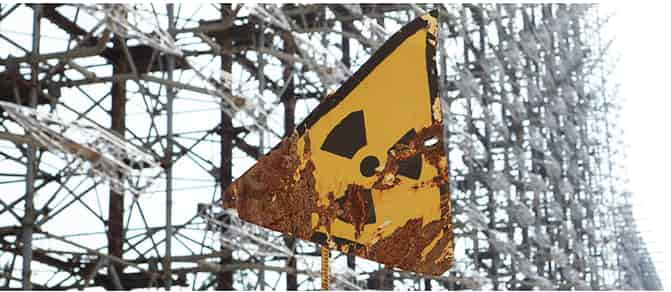
And when the clock struck midnight and struck 01:23, the inevitable happened. A massive power surge occurred at the heart of the reactor, and within seconds two massive explosions shook the plant. The first explosion was a steam explosion, blowing the 1,000-ton reactor cover into the air. The second explosion was a much more powerful nuclear explosion. The heart of the reactor, or “core,” was completely destroyed, and tons of radioactive material began to spill into the atmosphere like a volcano.
Radiation hundreds of times greater than that of the bomb dropped on Hiroshima was being released into the environment. Yes it was the Chernobyl disaster.
Firefighters’ Drama and Radioactive Clouds
The first to arrive at the plant immediately after the explosion were firefighters. They arrived at the scene without knowing the situation, only to receive an announcement that there was a “fire on the roof.” They heroically fought the flames without wearing any special protective clothing, exposed to lethal levels of radiation. Many of them began to show signs of acute radiation poisoning within hours and lost their lives in the weeks that followed. That night, dozens of unnamed heroes sacrificed themselves for humanity without knowing what they were fighting.
Meanwhile, Soviet authorities were trying to hide the seriousness of the incident. Initial reports to Moscow indicated that the situation was under control. However, the radiation had no limits. Two days after the explosion, alarm bells began to ring at a nuclear power plant in Sweden. Radioactive clouds carried by the wind had descended over Europe. The world learned of the worst nuclear disaster in history not from the Soviet Union, but from another country. The price of lies and secrecy would be very high.

Chernobyl Disaster: The Causes of the Explosion
The Chernobyl disaster was not the result of a single error; it was the result of a chain of disasters, a “perfect storm.” Behind this terrible event lay both structural flaws in the reactor’s design and a series of unforgivable human errors. When these two main factors came together, the explosion became inevitable. Let’s examine these causes in more detail and seek answers to the question, “How did such a big disaster happen?”
- The most important technical reason for the disaster was a fatal flaw in the design of reactor number 4. The RBMK reactors used at Chernobyl disaster were Soviet-made and lacked many of the safety measures that were standard in Western reactors. The biggest problem was that the reactor became unstable at low power and had a feature called a “positive void coefficient.” To put it simply, as the reactor heated up and the water inside evaporated, the nuclear reaction accelerated rather than slowed down. In other words, it had a structure that made itself even more dangerous when it started to spiral out of control.
- Another design flaw was in the structure of the control rods used to stop the reactor in emergency situations. The ends of these rods were made of graphite, which speeds up the reaction, instead of boron, which slows it down. When operators pressed the emergency button that night to stop the reactor, these graphite tips were the first parts to enter the core, causing a sudden power surge, in other words, an explosion. In other words, the reactor’s “brake” mechanism had momentarily acted as a “gas pedal.” This was an unforgivable design flaw.
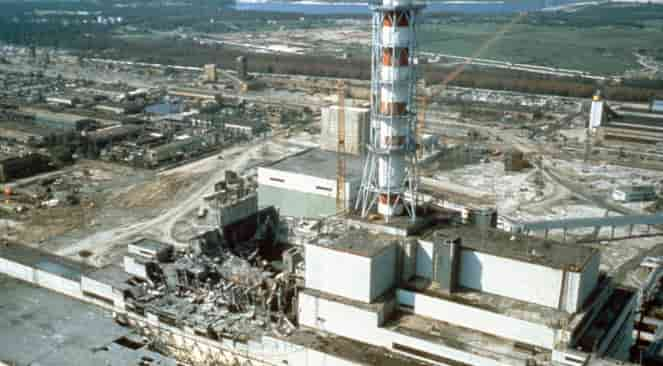
Human Errors and the Role of the Soviet System
- But it would be wrong to blame the design entirely. Human error and procedural violations played just as important a role as the design. The operators on duty that night were under pressure to finish the test as quickly as possible, and they continued to operate the reactor in a dangerous state where they should not have been operating. They disabled safety systems one by one, gave commands that prevented the reactor from shutting down, and in fact, knowingly or unknowingly, invited disaster. It was a dangerous combination of ignorance, lawlessness, and overconfidence.
- Finally, it was the Soviet system itself that fostered all these technical and human errors. There was a culture where everything was under state control, information was hidden, mistakes were not accepted, and there was always a requirement to report “success.” The safety culture was weak, operators were poorly trained, and problems at the plant were often reluctant to be reported to higher authorities. This culture of secrecy and fear prevented potential dangers from being detected and prevented in advance. In short, Chernobyl disaster was not just the explosion of a reactor, but also of a system.
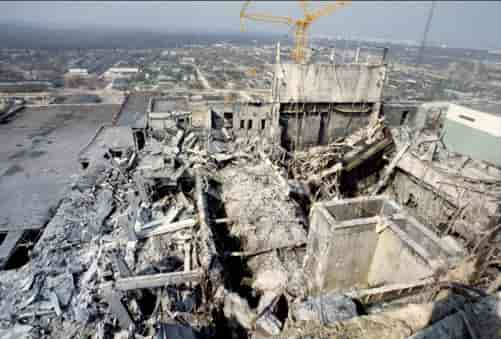
Not Just an Explosion: Chernobyl Today and Tomorrow
The fire of the Chernobyl disaster explosion was probably extinguished within a few weeks, but the fire of the radiation it emitted and the suffering it caused continues to burn. The effects of this disaster were not limited to those who lost their lives that night; it left deep scars that will last for generations. Immediately after the explosion, an extraordinary struggle began to bring the disaster under control.
- Hundreds of thousands of soldiers, miners, scientists and volunteers, known as “liquidators,” worked at the expense of their lives to clean the area and cover the reactor with a concrete sarcophagus, despite the deadly radiation levels. Their heroic sacrifice prevented the disaster from spreading further.
- The effects of the disaster on human health were horrific. Dozens of first responders lost their lives to acute radiation poisoning within weeks. However, the real impact was evident in the long term. The radioactive iodine released into the atmosphere after the explosion caused a huge increase in thyroid cancer cases, especially in children. Increases in leukemia, cataracts and other types of cancer were also observed.
- These health problems were not limited to Ukraine, Belarus and Russia; The effects of the radioactive clouds that reached many European countries, even Turkey, were discussed. The psychological trauma of the disaster left an immeasurable pain.
- The damage that Chernobyl disaster caused to the environment was equally great. The 30-kilometer area around the power plant was declared an “Exclusion Zone” and completely evacuated. The soil, rivers and forests in this area were heavily exposed to radioactive contamination. In particular, the pine forest right next to the power plant turned red due to high radiation and was called the “Red Forest”.
- Due to the very long half-lives of radioactive isotopes such as Cesium-137 and Strontium-90, it is estimated that the danger in these lands will continue for hundreds, even thousands of years.
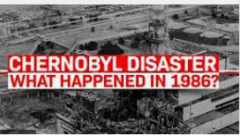
The Results of the Chernobyl Disaster: Generations
The most concrete and frightening symbol of the Chernobyl disaster is the city of Pripyat, which was established for the plant workers. 36 hours after the explosion, approximately 50,000 residents were evacuated with the announcement that they had to leave the city within a few hours. They left their homes, belongings and lives behind. Today, Pripyat is a ghost town with abandoned schools, a rusted Ferris wheel and empty apartments.
This city, where time seemed to freeze in 1986, stands as a silent monument to what human error can cost. Ironically, once the human factor was eliminated, nature began to reclaim the area, and wolves, bears and deer began to roam the abandoned streets.
Chernobyl’s political and cultural legacy was also deep. This disaster became a symbol of the Soviet Union’s secrecy and technological inadequacy, and was one of the important factors that accelerated the collapse of the system. A worldwide distrust of nuclear energy emerged, and nuclear safety standards were completely revised. In recent years, Chernobyl disaster has once again entered the popular culture spotlight, thanks in particular to HBO’s successful series.
This is a universal lesson that should not be forgotten, reminding us of the cost of lies, the importance of respecting science, and how dangerous it can be for human arrogance to challenge nature.
The Pain of Human Arrogance and Social Erosion
As you can see, the Chernobyl disaster was not just a technical failure or an accident; it was a preventable disaster caused by human arrogance, lies, systemic decay and ignorance. Most of all, it taught us how vital the truth is. This disaster, which left behind the unsung heroes who lost their lives that night, millions who suffered in the clutches of radiation and the silence of an abandoned city, is a permanent wound and an eternal warning for humanity.
What happened painfully showed how uncontrolled or unsupervised use of science and technology can lead to devastating results. The lesson to be learned from this incident is not only about nuclear energy; it is also how important transparency and responsibility are in decision-making processes.
Thousands of people living in the region were displaced after the disaster, and thousands more struggled with diseases caused by radiation. Nature tried to recover for years, and in some places it still has not. The Chernobyl disaster and its effects were not limited to radiation; it also deeply shook the sense of trust in societies and the transparency of states.
Today, Chernobyl is much more than a disaster area. It has been the subject of documentaries, books, TV series and research; it has become a symbol that attracts the attention of visitors from all over the world. This interest serves as a powerful reminder to not forget what happened and to prevent similar events from happening again in the future.
